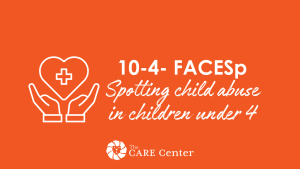Adults can also use age-appropriate ways to help children to communicate their feelings:
- Turn on some music and encourage the child to “wiggle their worries out.”
- Paint or color a picture to show each other how you are feeling (e.g., color a person half blue for sadness, half yellow for happiness).
- Try using a stuffed animal or puppet, start by asking your child, “This is Oscar the owl. How do you think he’s feeling? Oh, maybe he is sad. Why do you think he’s sad?” You can talk about or act out your child’s suggestion. Young children often prefer to talk with puppets or stuffed animals, and find it easier to express their worries this way.
- Make calming routines part of the day by practicing simple yoga moves before nap time, a gentle massage, or mindfulness exercises for toddlers and preschoolers (some examples of which will be presented next.)
- Perhaps the most important thing you can do to facilitate communication of feelings is to use feelings language yourself:
- Label your own emotions, and emotions of others that you see in videos, books, or in person.
- Label feelings for the child. For example, “I wonder if you’re feeling sad, because you’re crying.” “I think you look angry right now because you’re stomping your feet.” “I can tell you’re really happy because you’re smiling and giggling so much!”
Information in this article is provided courtesy of Lindsay Huffhines, PhD and the Doris Duke Charitable Foundation.



